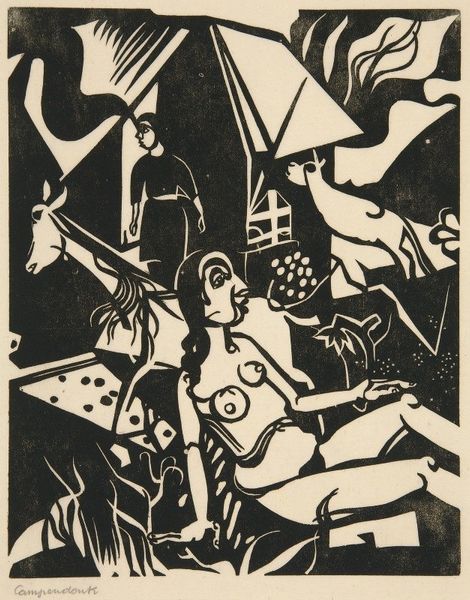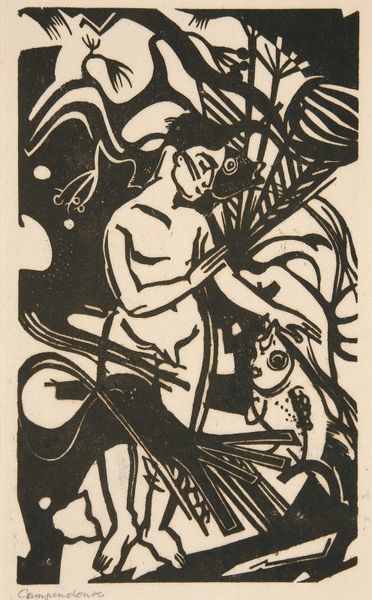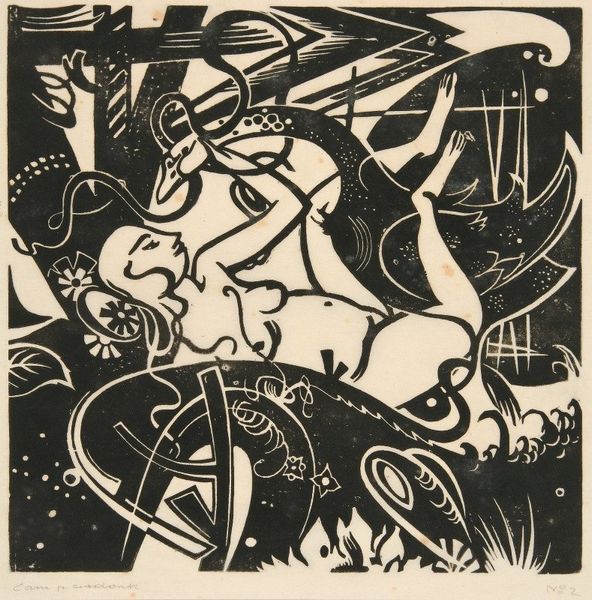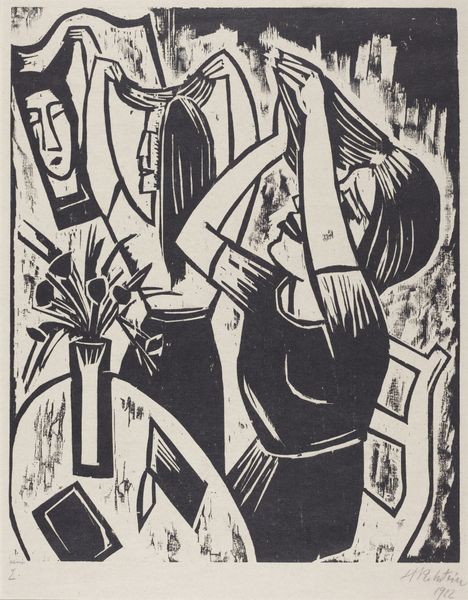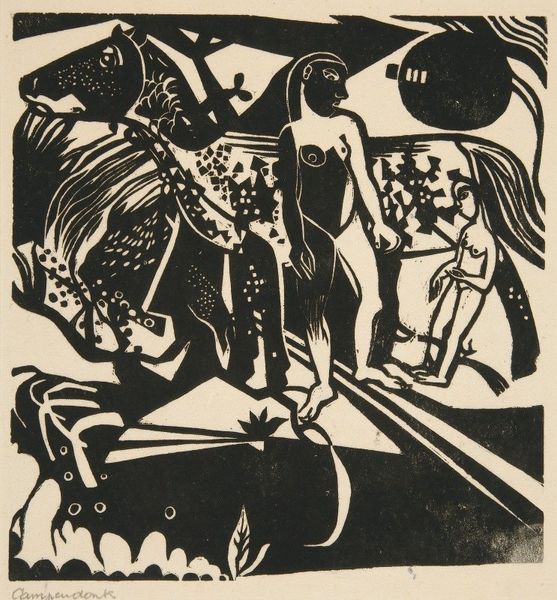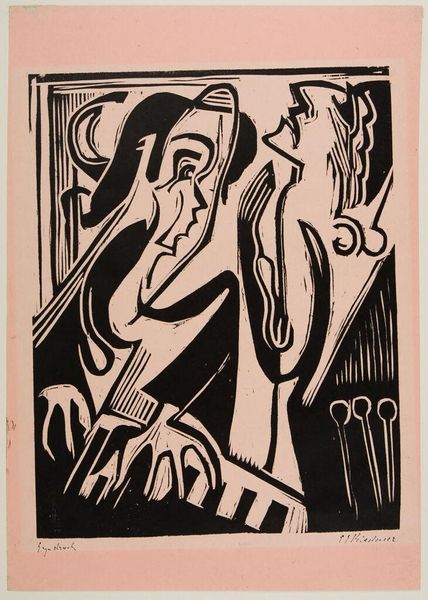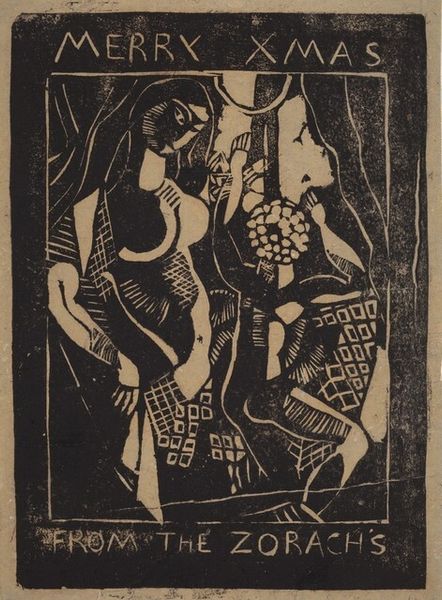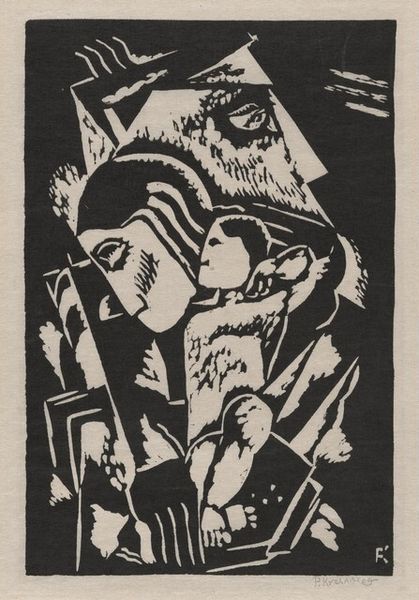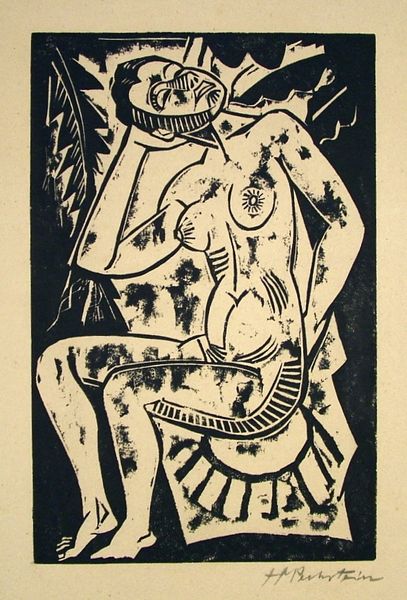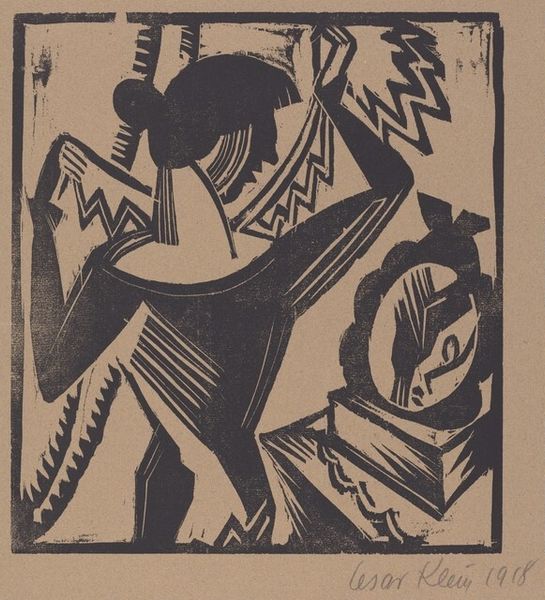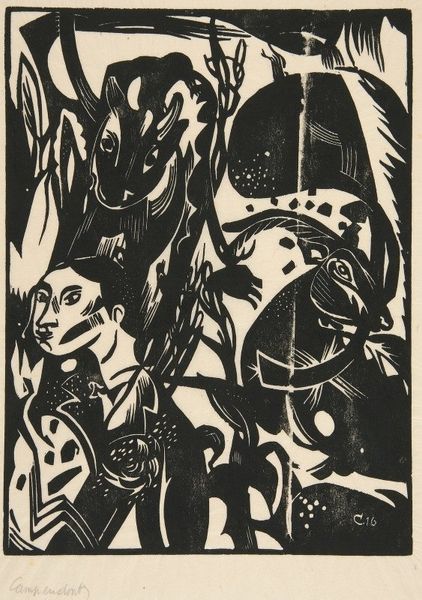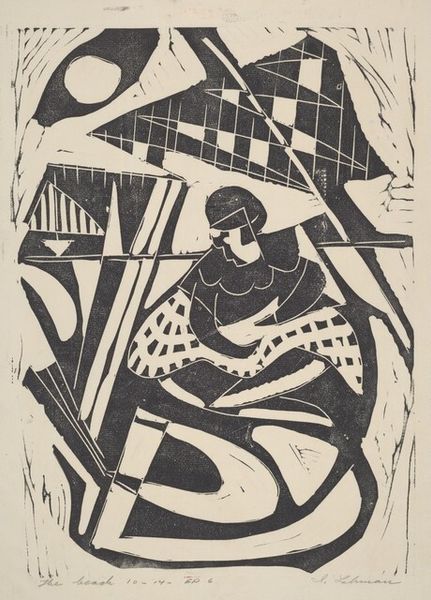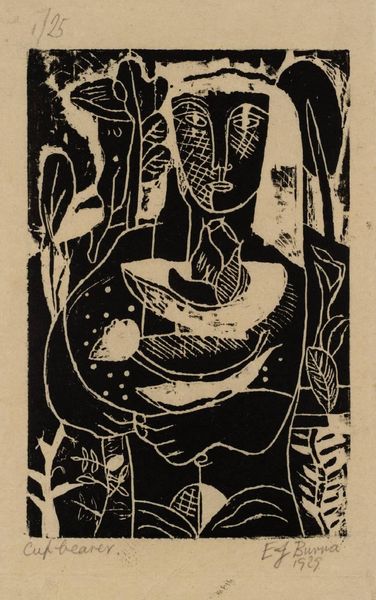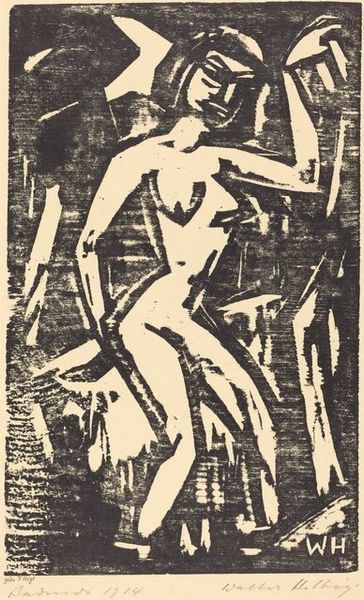
paper, woodcut
#
figuration
#
paper
#
abstract
#
ink line art
#
expressionism
#
woodcut
#
nude
Copyright: Public Domain: Artvee
Curator: Heinrich Campendonk’s 1917 woodcut, "Sitting Nude at Window with Cat," is a striking example of Expressionist printmaking. Editor: My first reaction is that it feels both chaotic and strangely intimate. The stark black and white lines create a real visual energy, and yet the pose of the figure, along with that little cat, feels quite tender. Curator: Yes, it’s an interesting paradox. The abstracted forms are characteristic of Campendonk's engagement with Expressionism, but as a social historian I find the context of its creation during the First World War quite potent. Expressionism, broadly, reflected anxieties about industrialization and modernity. I'm thinking about gender roles and anxieties of a European wartime context, but beyond this, this also begs larger questions about looking, privacy, the commodification of the body. Editor: That’s fascinating. You’re absolutely right about that tension reflecting a broader unease. To your point, the lines dissect the woman's body but do they reveal or conceal? Does the nudity invite or deny access? Curator: Precisely. And how are these anxieties gendered? This would be fertile ground to consider these intersections between body and trauma within shifting social expectations. Editor: Right, plus, you know, Expressionism, at least through this lens, provided an outlet for the artists and perhaps for viewers to grapple with trauma and the rapidly changing world. This woodcut feels more than just a formal exercise; it's like a record of that era. Even that cute little cat becomes part of this, positioned alongside the figure within all this trauma, almost providing comfort, or maybe even becoming just another object subject to the whims of conflict. Curator: Agreed, and beyond Campendonk, the larger Die Brucke, or The Bridge, Expressionist movement really provides that window into the artists, like Campendonk, reflecting their environment. It offers ways to view political art and visual resistance movements, or in cases such as these, opportunities to understand ways the avant garde reflected modern war. Editor: It's incredible how a seemingly simple image can hold so many layers of meaning and can generate avenues into sociopolitical issues. It speaks volumes, or rather, etches volumes through simple lines. Curator: Absolutely. This artwork functions as a testament to the power of art not just to mirror history, but to challenge, provoke, and offer an individual space for reflection on the sociohistorical.
Comments
No comments
Be the first to comment and join the conversation on the ultimate creative platform.
